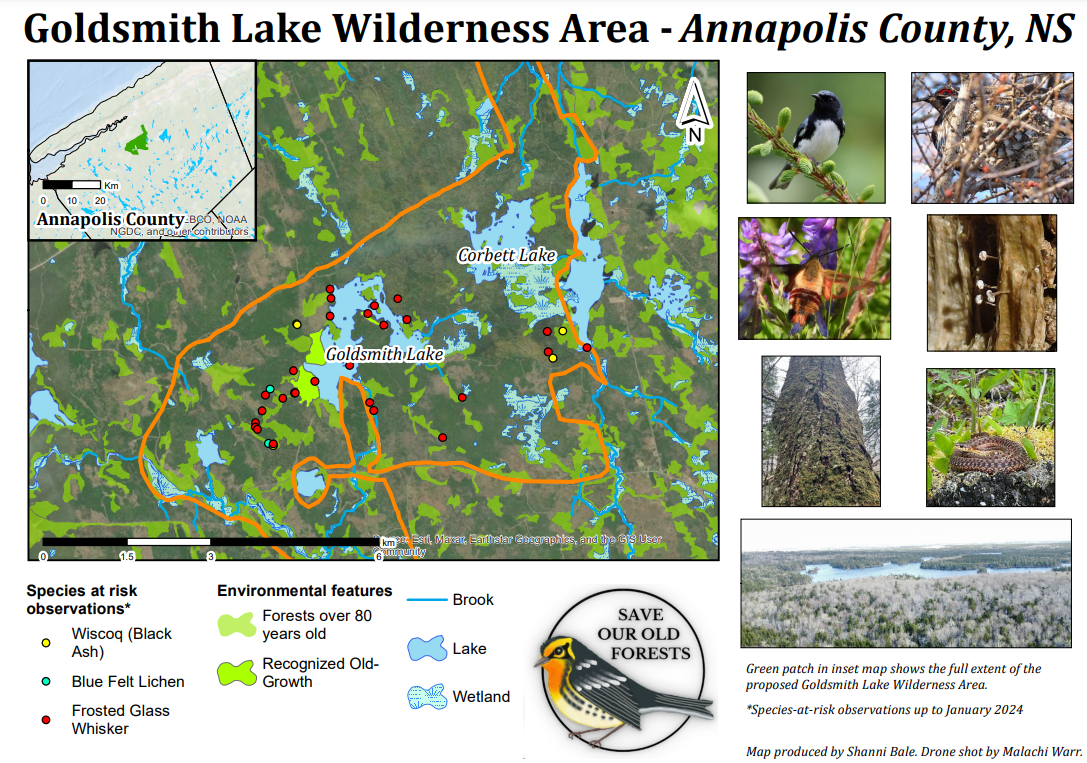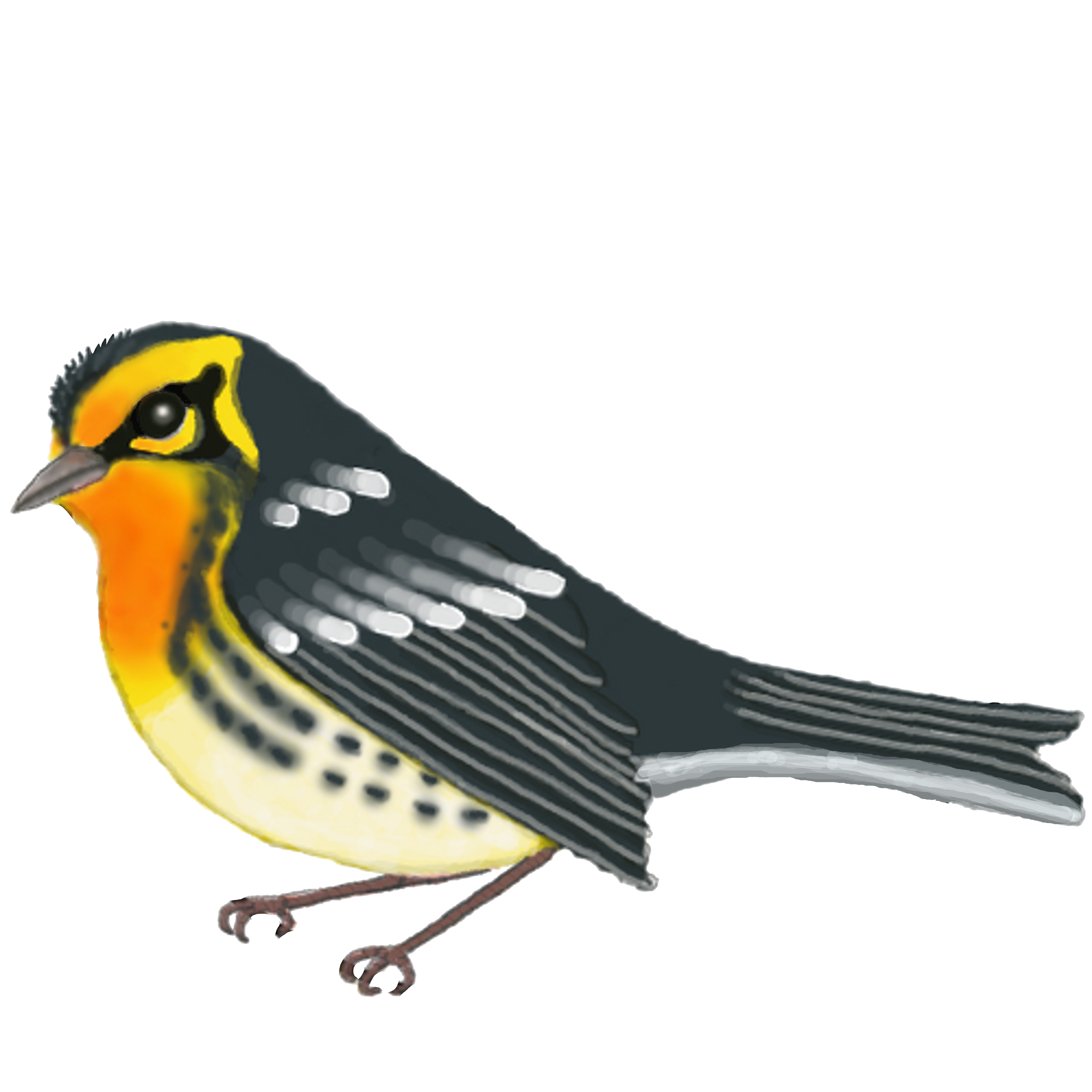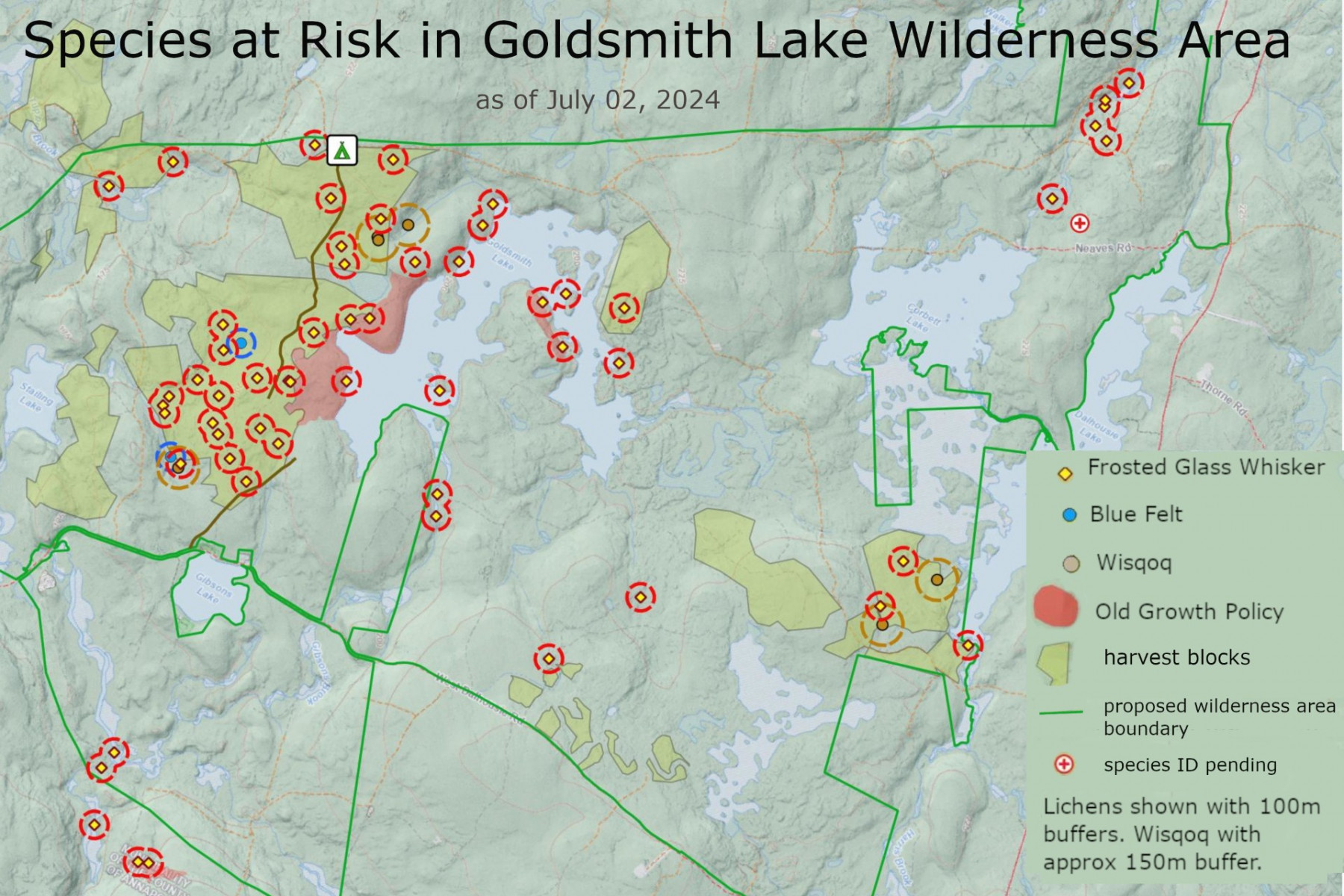The Jewel of Annapolis County

Goldsmith Lake is the largest lake in the Round Hill River watershed, a sub watershed of the Annapolis River. Unlike many of the other lakes in the area Goldsmith has not been dammed for hydroelectricity or water supply. Neither Goldsmith nor Corbett Lake to the east have been developed for summer or permanent homes, being formerly Bowater lands and now Crown.
The forests surrounding these two lakes are known to biologists, ecologists and interested residents of the area as being healthy, particularly rich in biodiversity, and relatively unspoiled by roads and logging. Almost nowhere in Nova Scotia is untouched. This area is some of the very best of what we do have.
The Citizen Scientists of Southwest Nova Scotia submitted a proposal to the Protected Areas Branch (NS Department of Environment and Climate Change) to protect an area of 3900 ha of Crown land surrounding Goldsmith Lake. The original proposal was submitted in November 2022. Since that time there has been a lot of exploration done in the area which has resulted in many occurrences of Species At Risk, and discoveries of previously unidentified areas of forests that meet the criteria of “Old Growth” and have been confirmed by the Department of Natural Resources and Renewables.
If it were to be designated “protected” the Goldsmith Lake Wilderness Area would include both Goldsmith and Corbett lakes, as well as headwaters of the Round Hill River, and Tupper Brook, patches of recognised old growth and other areas of high conservation value old forest.
Proposal To protect
Species at risk (SAR) at Goldsmith Lake
Citizen Scientists have identified, confirmed and reported sightings of the following SAR in the forests around Goldsmith Lake:
- Blue felt lichen (Pectenia plumbea)
- Frosted glass-whisker lichen (Sclerophora peronella)
- Wisqoq or Black ash (Fraxinus nigra)
- Common nighthawks (Chordeiles minor)
- Eastern wood pewee (Contopus virens)
- Chimney swifts (Chaetura pelagica)
Join Friends of Goldsmith Lake Wilderness Area on Facebook to keep up to date about new discoveries and photos!

